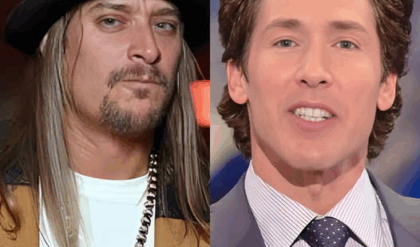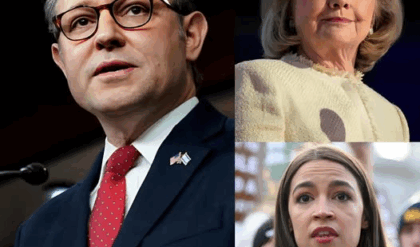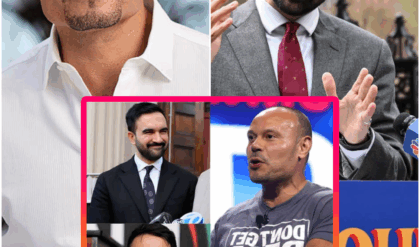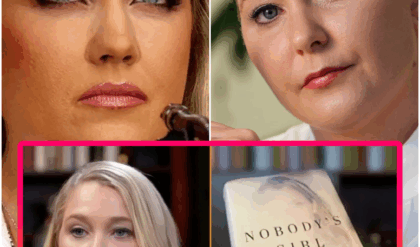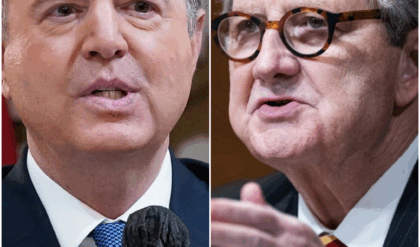
In a surprising twist of fate, “The View” has hit rock bottom, marking the lowest ratings in television history after featuring the acclaimed actor Robert De Niro. Once a staple of daytime television, “The View” has seen a significant drop in viewership, sparking conversations about the show’s current relevance and the impact of its guest choices.
“The View,” which premiered in 1997, was once a pioneer in the daytime talk show genre. Created by broadcast legend Barbara Walters, the show aimed to present a diverse panel of women discussing “hot topics” of the day. It quickly became a platform for lively debates and candid conversations, attracting a loyal audience. However, recent years have not been kind to the show. With a revolving door of co-hosts, controversies, and an increasingly polarized political landscape, “The View” has struggled to maintain its once-dominant position.
Robert De Niro’s appearance on “The View” was heavily promoted by the show’s producers. Known for his outspoken political views, especially his criticism of former President Donald Trump, De Niro’s visit was expected to draw in viewers eager to hear his thoughts on the current state of the nation. However, the outcome was far from what the producers had anticipated.
De Niro’s segment, instead of boosting ratings, seemed to have had the opposite effect. Viewers took to social media to express their dissatisfaction with the episode. Some felt that the actor’s presence overshadowed the show’s regular format, while others were put off by the political discourse that dominated the conversation.
The backlash was immediate and intense. Social media platforms were flooded with negative comments, many of which criticized the show’s reliance on polarizing figures to boost ratings. “The View” has always thrived on controversy and debate, but it seems this time they pushed the envelope too far.
“I used to watch ‘The View’ for its balanced discussions,” one Twitter user wrote. “Now it’s just a platform for Hollywood elites to push their agendas. De Niro was the last straw for me.” Another viewer commented, “I wanted to hear about different perspectives, not just another anti-Trump rant. The show has lost its way.”
Nielsen ratings reported that the episode featuring De Niro recorded the lowest viewership in the show’s history. This stark drop has left many questioning the show’s future. Media analysts have noted that “The View” is no longer the ratings juggernaut it once was, and this recent dip could signal deeper issues within the show’s format and content strategy.
Several factors may have contributed to this unprecedented ratings drop. Firstly, the show’s attempt to cater to a highly polarized audience can backfire. By focusing too much on political figures known for their controversial opinions, “The View” risks alienating a significant portion of its audience who tune in for a more balanced discussion.
Secondly, the changing media landscape means viewers have more options than ever before. With the rise of streaming services and on-demand content, traditional talk shows must adapt to stay relevant. “The View” may need to rethink its approach to content and guest selection if it wants to recapture its former glory.
For “The View,” this ratings disaster could serve as a wake-up call. The show must reassess its strategy and find a way to reconnect with its audience. This might involve returning to its roots, focusing on a broader range of topics, and featuring guests who represent a wider spectrum of opinions.
Moreover, “The View” could benefit from stabilizing its co-host lineup. Frequent changes have left viewers feeling disconnected from the show’s core dynamic. A consistent panel could help rebuild the trust and loyalty of its audience.
As for Robert De Niro, the actor remains unphased by the controversy. Known for his forthrightness, De Niro has never shied away from expressing his opinions. However, his appearance on “The View” has sparked discussions about the role of celebrities in political discourse. While some viewers appreciate hearing from public figures who use their platform to advocate for change, others feel that entertainers should stay in their lane.
The fallout from De Niro’s appearance on “The View” highlights a broader issue in media today: the delicate balance between entertainment and political commentary. Shows like “The View” must navigate these waters carefully to avoid alienating their audience.
One lesson is clear: viewers crave authenticity and balance. They want to hear diverse opinions and engage in meaningful discussions without feeling bombarded by one-sided viewpoints. “The View” must find a way to provide this balance if it hopes to regain its lost viewership.
The plunge in ratings following Robert De Niro’s appearance on “The View” serves as a stark reminder of the challenges faced by modern talk shows. In an era of media saturation and political polarization, maintaining relevance and audience trust is more difficult than ever. For “The View,” this incident could either mark the beginning of the end or be a catalyst for much-needed change. Only time will tell if the show can adapt and reclaim its position as a leading voice in daytime television.
News
NEWS: Elon Musk vs. Taylor Swift and Imane Khelif….
Elon Musk vs. Taylor Swift and Imane Khelif: A power play reshaping the digital landscape. Who’s next? In a dramatic turn of events, Elon Musk has once again demonstrated the immense influence he wields over the digital world, sparking chaos…
NEWS: Primanti Bros Shuts Down Franchises….
Primanti Bros Shuts Down Franchises in Red States, Declares “That’s Not the America We Stand For” Primanti Bros, the well-known Pittsburgh-based sandwich chain, has made a controversial decision to close all of its franchises in red states, citing that “That’s…
NEWS: NFL’s Travis Kelce Announces He’s Leaving…
NFL’s Travis Kelce Announces He’s Leaving Elon Musk’s ‘Hate Machine’ X App, Calling It a ‘Toxic Waste Dump’ After Scathing and Hurtful Comments About… In a dramatic turn of events, NFL star Travis Kelce has announced his departure from Elon…
NEWS: ‘Wicked’ Co-Stars Ariana Grande and Cynthia….
EXCLUSIVE: ‘Wicked’ Co-Stars Ariana Grande and Cynthia Erivo’s Cringey Public Lovefests Branded a ‘Sham’ to Cover Up ‘Behind-Scenes Hatred’ The public lovefest between Ariana Grande and Cynthia Erivo is a Wicked lie. That’s the dirt being dished by industry insiders, who said the on-set tension between…
NEWS: Sylvester Stallone is served by a black waitress….
Black Waitress Serves Sylvester Stallone, Saw Note on Check, and Burst into Tears Reba McEntire in Roberto Cavalli, Lainey Wilson in Area Suit & More ACM Awards 2024 Red Carpet Arrivals, Live Updates Country’s biggest stars gathered on the 2024 Academy…
NEWS: Steph Curry, 36, FINALLY VERIFIES THE STORIES….
At 36, Steph Curry FINALLY Confirms The Rumors Steph Curry Addresses When His NBA Career Could Be Over Steph Curry and the Golden State Warriors will host LeBron James and the Los Angeles Lakers on Christmas in what will…
End of content
No more pages to load






